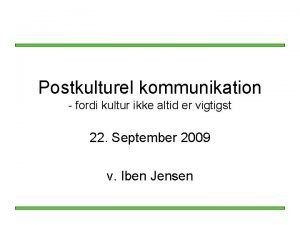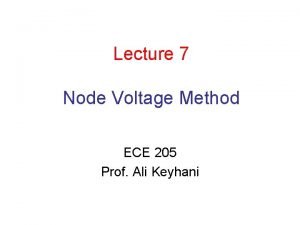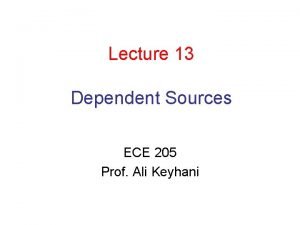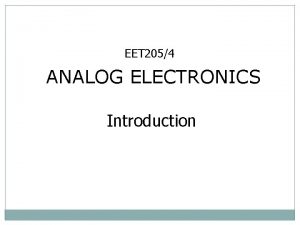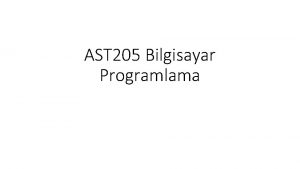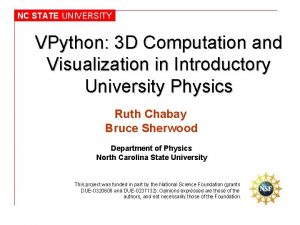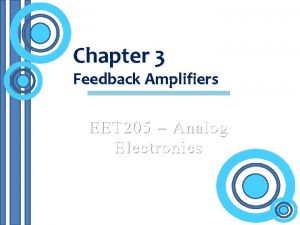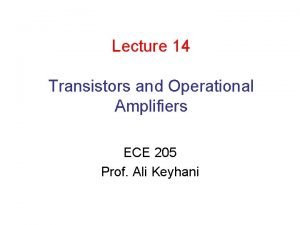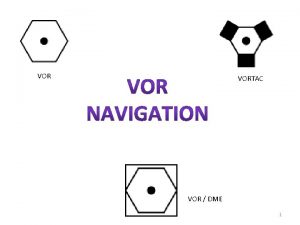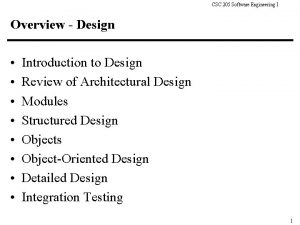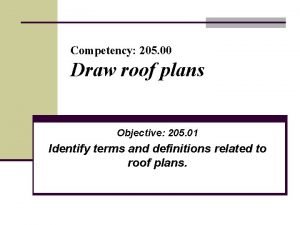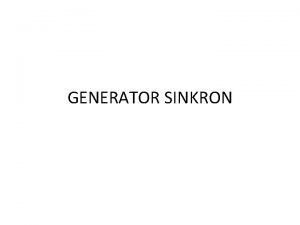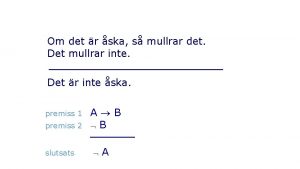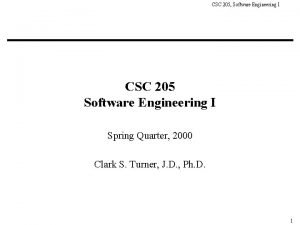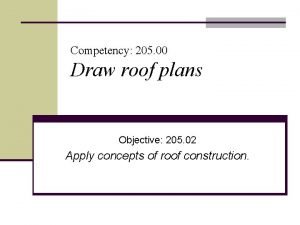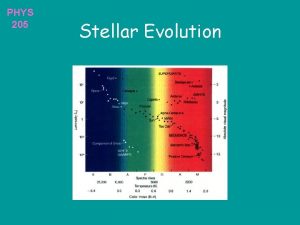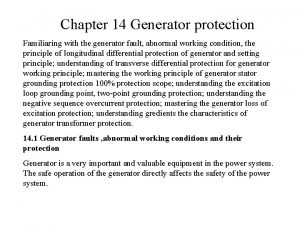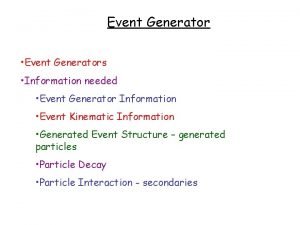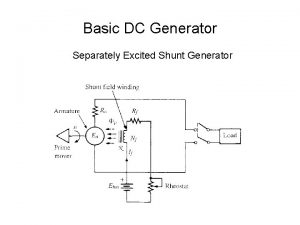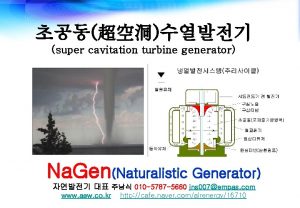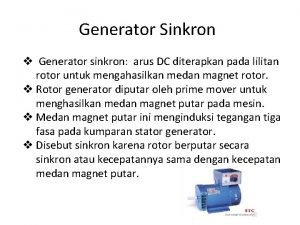DET 205 Chapter 2 DC Generator DC Generator





















- Slides: 21

DET 205 Chapter 2 DC Generator

DC Generator There are five major types of DC generators: 1. Separately excited generator. In a separately excited generator, the field flux is derived from a separately power source independent of the generator itself. 2. Shunt generator. In a shunt generator, the field flux is derived by connecting the field circuit directly across the terminals of the generator. 3. Series generator. In a series generator, the field flux is by connecting the field circuit in series with the armatureproduced of the generator.

4. Cumulatively compounded generator. In a cumulatively compounded generator, both a shunt and a series field are present and their effects are additive. 5. Differentially compounded generator. In a differentially compounded generator, both a shunt and a series field are present, but their effects are subtractive. DC generators are compared by their voltages, power ratings, efficiencies and voltage regulations. Voltage regulation, VR is defined by

Separately Excited Generator

Example 2. 1 If no load voltage of a separately-excited dc generator is 135 V at 850 r/min, what will be the voltage if the speed is increased to 1000 r/min? Assume constant field excitation.

Solution 2. 1 Constant field excitation means; if 1 = if 2 or constant flux; 1 = 2

Shunt DC Generator

Series DC Generator

The Cumulatively Compounded DC Generator Total Magnetomotive force Cumulatively compounded dc generator with a long shunt connection Cumulatively compounded dc generator with a short shunt connection

Differentially Compounded DC Generator With a long shunt connection Equivalent shunt field current,

Example 2. 2 A short-shunt compound generator delivers 50 A at 500 V to a resistive load. The armature, series field and shunt field resistance are 0. 16, 0. 08 and 200 , respectively. Calculate the armature current if the rotational losses are 520 W, determine the efficiency of the generator

Solution 2. 2 Armature Copper Loss Series Field Copper Loss Shunt Field Copper Loss Friction + Stray + windage + etc: Total Losses =

Efficiency, η =

Power flow and losses in DC machines DC generators take in mechanical power and produce electric power while DC motors take in electric power and produce mechanical power Efficiency

The losses that occur in DC machine can be divided into 5 categories 1. Copper losses (I 2 R) 2. Brush losses 3. Core losses 4. Mechanical losses 5. Stray load losses Ia = armature current If = field current Ra = armature resistance Rf = field resistance VBD = brush voltage drop - Usually assumed to be 2 V

Power Losses Core losses – Hysteresis losses and Eddy current losses Mechanical losses – The losses that associated with mechanical effects. Two basic types of mechanical losses: Friction & Windage. Friction losses caused by the friction of the bearings in the machine. Windage are caused by the friction between the moving parts of the machine and the air inside the motor casing’s Stray losses (Miscellaneous losses) – Cannot placed in one of the previous categories.

The Power Flow Diagram Pout = VTIL For generator

The Power Flow Diagram For motor

Equivalent circuit of DC generator Vf = field voltage Rfw = rheostat resistance If = field current Rf = Rfc + Rfw = field circuit resistance Ra = armature resistance

Ea = KФω where Ф = flux generated by field current, If VT = terminal voltage Ia = armature current

Equivalent circuit of DC motor Vf = field voltage Rfw = rheostat resistance If = field current Rf = Rfc + Rfw = field circuit resistance Ra = armature resistance
 Det beskrivende og det komplekse kulturbegreb
Det beskrivende og det komplekse kulturbegreb Det finns bara en gud och det är allah
Det finns bara en gud och det är allah Ncoer regulation ar 623-205
Ncoer regulation ar 623-205 205 to binary
205 to binary Ncoer non rated codes
Ncoer non rated codes Node voltage
Node voltage Node voltage analysis with dependent sources
Node voltage analysis with dependent sources Eet 205
Eet 205 Ast 205
Ast 205 Sia 205
Sia 205 Phy 205
Phy 205 Vpython alternatives
Vpython alternatives Che 205
Che 205 Eet205 notes
Eet205 notes Ece 205
Ece 205 Lafayette school newark nj
Lafayette school newark nj Item 227
Item 227 Vor vortac vor dme
Vor vortac vor dme Far91.205
Far91.205 Round 716 to the nearest hundred
Round 716 to the nearest hundred Modular decomposition in software engineering
Modular decomposition in software engineering Mansard roof plan view
Mansard roof plan view
